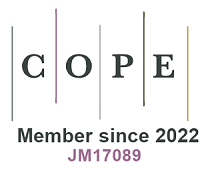Measurement of Achilles tendon thickness using ultrasonography for diagnosis and risk assessment in patients with familial hypercholesterolemia
Abstract
Familial hypercholesterolemia (FH) is an autosomal dominant inherited disorder characterized by elevated low-density lipoprotein cholesterol (LDL-C) levels and skin and/or tendon xanthomas. FH is caused by mutations in genes associated with the LDL receptor pathway. Heterozygous FH is frequently encountered, occurring in about one in 300 people, one in 30 people with coronary artery disease, and one in 15 people with premature coronary artery disease or severe hyperlipidemia. Because FH patients are exposed to high LDL-C concentrations from birth, this leads to progressive atherosclerosis, and the development of cardiovascular events in these patients is
Keywords
INTRODUCTION
Familial hypercholesterolemia (FH) is an inherited disorder that causes very high levels of low-density lipoprotein cholesterol (LDL-C). Heterozygous FH is frequently encountered, occurring in about one in 300 people, one in 30 people with coronary artery disease, and one in 15 people with premature coronary artery disease or severe hyperlipidemia[1]. Because FH patients are exposed to high LDL-C concentrations from birth, this leads to progressive atherosclerosis, and the development of cardiovascular events in these patients is younger than the typical age of onset. Therefore, early diagnosis and treatment of FH are very important to improve prognosis. However, although FH is a relatively common hereditary disorder, its diagnostic rate remains low[2]. Achilles tendon thickening is a specific physical finding in patients with FH. Thicker Achilles tendons are associated with a higher risk of cardiovascular events. Therefore, the measurement of Achilles tendon thickness is beneficial not only for the diagnosis of FH but also for cardiovascular event risk assessment.
However, Japan is the only country in the world where Achilles tendon thickness is included as a criterion for diagnosing FH. To improve the diagnostic rate of FH globally, it is essential to promote the widespread use of ultrasonography, which is a simple and accurate method for measuring Achilles tendon thickness.
In this review, we summarize the usefulness of measuring Achilles tendon thickness for diagnosis and risk assessment of cardiovascular events in FH.
FAMILIAL HYPERCHOLESTEROLEMIA?
What is familial hypercholesterolemia?
FH is an autosomal dominant inherited disorder characterized by elevated LDL-C levels, skin and/or tendon xanthomas, and early-onset coronary artery disease (CAD) due to premature atherosclerosis[3,4]. FH is caused by mutations in genes associated with the LDL receptor pathway. The majority of causative genes are LDLR mutations, with proprotein convertase subtilisin/kexin type 9 (PCSK9) gain-of-function mutations accounting for approximately 5% of heterozygous FH (HeFH). Apolipoprotein B (APOB) mutations are relatively common in Europe but extremely rare in Japan[5]. HeFH is frequently encountered, occurring in about one in 300 people, one in 30 people with coronary artery disease, and one in 15 people with premature coronary artery disease or severe hyperlipidemia[1]. Homozygous FH (HoFH), on the other hand, is found in one or more people in 360,000 to 1 million of the population. Because FH patients are exposed to high LDL-C concentrations from birth, this leads to progressive atherosclerosis and the onset of cardiovascular events in these patients occurs 15-20 years earlier than the typical age of onset[2]. Early diagnosis and appropriate treatment are necessary to prevent the development of CAD.
Xanthomas and Achilles tendon thickening
The diagnosis of FH is based on untreated LDL-C levels, family history, the presence of xanthomas, and genetic analysis. Xanthomas occur most frequently in areas subject to mechanical stress, such as the elbows, knees, wrists, and buttocks. Xanthomas are a characteristic physical finding of FH and a decisive factor in its diagnosis. The Dutch Lipid Clinic Network FH criteria[6], Simon-Broome diagnostic criteria[7], and Make Early Diagnosis to Prevent Early Death[8] include tendon xanthomas in their FH diagnostic criteria. In 1977, Mabuchi reported that FH could be detected from Achilles tendon thickness using radiography[9]. As a result, the Japan Arteriosclerosis Society (JAS) FH criteria included Achilles tendon thickening as a diagnostic criterion in addition to the presence of tendon xanthomas, defining Achilles tendon thickening as Achilles tendon thickness of 9 mm or more by soft radiography for both sexes[10]. However, there were several problems with this definition. First, while the specificity for diagnosis was very high, sensitivity was low. The reason for this is thought to be that although gender differences in Achilles tendon thickness are observed, no gender-specific cutoff values have been set, making women less likely to be diagnosed with FH. Second, this threshold was established when statins were not available. Finally, the threshold was not determined by statistical analysis using ROC curves. Therefore, based on the results of an analysis of 986 cases in Japan[11], the 2022 edition of the JAS FH criteria set gender-specific reference values for Achilles tendon thickness by radiography at 8.0 mm for men and 7.5 mm for women, which improved diagnostic sensitivity while ensuring specificity.
On the other hand, approximately 30% of patients with FH do not exhibit Achilles tendon thickening[12]. In general, xanthomas, if present before adulthood, tend to be mild, and they often become more pronounced with aging. However, there are also cases in which tendon xanthomas are absent even in elderly individuals. Possible reasons for the reduced tendency of Achilles tendon thickening include early therapeutic intervention and genetic factors related to FH[13]. We analyzed the relationship between AT thickness and carotid intima-media thickness (IMT) in 450 patients clinically diagnosed with heterozygous FH. Among teenagers, no carotid IMT thickening was observed; however, 39% of the subjects exhibited AT thickening. These findings suggest that AT thickness is a more sensitive indicator than carotid IMT for assessing the degree of lipid deposition in tissues, particularly in young adults[14].
Regression of Achilles tendon xanthoma in FH by lipid-lowering drugs and LDL-apheresis
Thickened Achilles tendon in patients with FH is composed of cholesterol, macrophage-derived foam cells, and other components. Therefore, it is expected that a reduction in LDL-C through pharmacological therapy would lead to the removal of lipid components, resulting in a decrease in Achilles tendon thickness. However, reports of actual tendon regression following pharmacological treatment are relatively rare.
Probucol has been reported to have a certain degree of LDL-C lowering effect even in homozygous FH and has been associated with the reduction or disappearance of xanthomas in the skin and Achilles tendon[15]. Statins, which are frequently used in FH, have also been reported to reduce Achilles tendon thickness[16]. However, in this report, regression was observed in normal, non-thickened Achilles tendons, whereas no significant change was observed in the group with thickened tendons.
In contrast, treatments that significantly lower LDL-C, such as PCSK9 inhibitors and apheresis, have been reported to result in a significant regression of the Achilles tendon over approximately three years[17]. However, some studies have indicated that while PCSK9 inhibitors reduced carotid intima-media thickness (C-IMT), they had no effect on Achilles tendon thickness[18]. The effects of ezetimibe, resins, microsomal triglyceride transfer protein (MTP) inhibitors and Angiopoietin-like 3 (ANGPTL3) inhibitors on the Achilles tendon remain unclear.
As these reports suggest, the relationship between lipid-lowering drugs and Achilles tendon regression has not been definitively established. Since Achilles tendon thickness reflects the cumulative burden of LDL-C, we believe that even if LDL-C is reduced, its long-term accumulation may prevent a significant regression of the tendon. In cases where Achilles tendon regression has been observed, we speculate that this may not be due to LDL-C reduction itself but rather to the improvement of inflammation-induced edema, potentially as a result of the antioxidant and anti-inflammatory effects of the treatment[19].
MEASURING ACHILLES TENDON THICKNESS
Ultrasonography is affected by the presence of air or bone. However, since the Achilles tendon is located just beneath the skin, it can be clearly visualized without being affected by these factors, making it an accessible and effective imaging modality for anyone. Therefore, ultrasonography is a useful diagnostic tool for tendon disorders[20]. We have been working on establishing a method for the measurement of Achilles tendon thickness in patients with FH by ultrasonography since 2013. We analyzed 130 FH patients with genetic mutations and 155 non-FH patients. The Achilles tendon thickness in FH patients was 9.2 mm
Cholesterol is used to repair Achilles tendons damaged due to weight-bearing or mechanical stimuli, but in FH, LDL-C is markedly elevated during growth when the frequency of injury and repair is high, and excess LDL is trapped in the extracellular matrix of the Achilles tendon. The LDL is then oxidatively denatured and phagocytosed by invading macrophages to form foam cells, which are deposited in the Achilles tendon, resulting in its thickening[27] [Figure 1]. It is of note that smoking affected Achilles tendon thickening in our study[21]. Tendon xanthomas are formed by focal infiltration of lipid-accumulating foamy macrophages into tendon cells, extracellular ester and non-esterified cholesterol deposits, and connective tissue[28]. There is a positive correlation between the size of Achilles tendon xanthomas and autoantibody titers against oxidized LDL[29]. Several pathways promote the formation of oxidized LDL, including inflammatory cytokines, increased oxidative stress, and macrophage activation[30]. Smoking contributes to an increase in inflammatory cytokines, promotes LDL oxidation, and enhances its metabolism by macrophages[31-35]. Therefore, smoking-induced inflammation and oxidative stress may increase phagocytosis of LDL trapped in the extracellular matrix by macrophages, thereby promoting oxidative degeneration[36].
Additionally, the presence of Achilles tendon xanthomas in patients with FH has been reported to be associated with genetic mutations in the LDL oxidative pathway[37], and the formation of Achilles tendon xanthoma is also linked to increased intracellular lipid content and a strong inflammatory response of macrophages to oxidized LDL[38]. This suggests that the oxidative and inflammatory properties of LDL play an important role in the formation of Achilles tendon xanthomas. Furthermore, although the ultrasonographic and radiographic methods were well correlated in our study (R = 0.924, P < 0.001), the Achilles tendon was found to be thicker by radiography than ultrasonography[21]. This may be due to the fact that in radiography, voltage and other parameters are adjusted to increase contrast, but the boundary between the Achilles tendon and skin is often unclear due to the similar degree of X-ray transmission for both of them [Figure 2]. Thus, skin and subcutaneous tissue may also be included in the Achilles tendon thickness measured. In addition, there is twisting in the Achilles tendon from the soleus and gastrocnemius muscles to the calcaneus[39], and it is located at an angle to the direction of the X-ray beam. For this reason, radiographic methods that measure shading overestimate Achilles tendon thickness by the degree of torsion [Figure 3].
Figure 2. Achilles tendon image of a 77-year-old patient with Familial hypercholesterolemia by ultrasonography (A) and X-ray (B). The boundary of the Achilles tendon is clearly delineated by ultrasonography (A), but the boundary by X-ray is unclear (B).
Figure 3. The problem of twisting in the Achilles tendon due to its orientation at an angle to the direction of the X-ray beam. US-ATT: Achilles tendon thickness measured by ultrasonography, Xp-ATT: Achilles tendon thickness measured by radiography.
In addition to ultrasound and X-ray methods, CT and MRI are also available modalities for evaluating the Achilles tendon. Bude et al. reported that ultrasound is superior to MRI in terms of contrast resolution and the ability to detect focal lipid deposits, making it the optimal method for detecting xanthomas[40]. Similarly, Liem et al. also reported that MRI does not necessarily have a higher ability than ultrasound to distinguish FH[41]. Moreover, a very strong correlation (r = 0.96) was observed between CT and ultrasound. While CT and MRI excel in the detailed assessment of tissue structures, they come with challenges such as high costs, longer imaging times, and radiation exposure, making ultrasound the preferred first-choice modality for Achilles tendon evaluation. Regarding MRI, there is potential for a novel evaluation method based on internal composition that utilizes differences in signal intensity between FH and non-FH cases[42].
When measuring Achilles tendon thickness using the ultrasonic method, it is not necessary to prepare a dedicated device, as a general-purpose device can be used. The equipment utilized is a general-purpose ultrasound machine commonly used for examining the carotid artery and abdominal regions, with a high-frequency probe designed for imaging the carotid artery and superficial organs such as the thyroid gland and mammary glands. Therefore, this measurement can be performed in a wide range of medical institutions, including hospitals and clinics.
ASSOCIATION BETWEEN ACHILLES TENDON THICKNESS AND CARDIOVASCULAR EVENTS
The major complications of atherosclerosis in patients with FH include coronary artery disease, peripheral artery disease, and carotid atherosclerosis, while the mortality rate from stroke is not significantly different from that of the general population[43]. Cardiovascular events begin to increase in FH from the age of 40 years in men and from the age of 50 years in women[44], with a higher risk of developing coronary artery disease compared to non-FH[6,45], and a five- to ten-fold higher odds ratio for peripheral artery disease compared to non-FH[46]. Achilles tendon thickness is thought to reflect cumulative LDL-C levels, with thicker Achilles tendons associated with a higher risk of cardiovascular events[21-23]. In our study[47], Achilles tendon thickening was observed in 95% of patients in the major adverse cardiac events (MACE) group and 63% in the non-MACE group. During a follow-up period of 1,239 days (700-1,827 days), Achilles tendon thickening increased the odds of cardiovascular events by 6.7 times (odds ratio [OR]: 6.67, 95% confidence interval [CI]: 2.39-18.63, P < 0.001), while tendon softening increased the odds by 4.9 times (OR: 4.93,
When the Achilles tendon is thickened, it indicates a significant accumulation of lipids within the tissue, highlighting the importance of strict risk management. On the other hand, cardiovascular events can still occur in patients without Achilles tendon thickening. This is particularly true in younger individuals and women, where Achilles tendon thickening may not be evident. Therefore, it is advisable to perform carotid ultrasonography as an additional evaluation, and if atherosclerotic changes are detected, further assessment with coronary CT or coronary angiography should be considered.
ACHILLES TENDON SOFTNESS
The Achilles tendon is a collection of fibers covered by a surrounding membrane called the paratenon. In a normal Achilles tendon, the longitudinal ultrasound image shows a white, thin, linear fibrillar pattern. In contrast, the transverse image shows a thin, oval-shaped, hyperechoic pattern that fills the paratenon [Figure 4A]. As mentioned above, the Achilles tendon sustains minor damage due to mechanical stimulation and weight-bearing, and due to marked hyper LDL-cholesterolemia from birth in FH, excess cholesterol accumulates in the Achilles tendon during repair[48]. As a result, the ultrasound image of the Achilles tendon in FH is hypoechoic and the fibrillar pattern, which indicates fibrous structure, is no longer visible due to thickening [Figure 4B]. However, in younger patients whose lipid deposition in the Achilles tendon is not yet sufficient for thickening, the diagnosis of FH may be difficult because the Achilles tendon shows hypoechoic areas but not thickening. We speculated that areas of lipid deposition are softer than normal tissue and measured the softness of Achilles tendons. Since ultrasound elastography provides information on tissue softness, we used it as a method for determining FH patients at the pre-thickening stage, measuring Achilles tendon softness as an indicator of the degree of lipid deposition in the Achilles tendon [Figure 5]. The study included 115 genetically diagnosed heterozygous FH patients and 77 non-FH patients. Ultrasound elastography was used to measure the softness of the Achilles tendon, revealing that the hypoechoic areas with lipid deposition were softer than the areas without deposition, and FH patients had softer tendons compared to non-FH patients[49]. Furthermore, cutoff values for Achilles tendon softness were calculated, and the diagnostic performance of FH was assessed by considering both tendon thickness and softness. When the cutoff values for ATT, EI, and the combination of ATT and EI were applied, the sensitivities were 0.722, 0.670, and 0.817, the specificities were 0.961, 0.883, and 0.844, the positive predictive values were 0.965, 0.895, and 0.887, and the negative predictive values were 0.698, 0.642, and 0.756, respectively, demonstrating improved diagnostic accuracy. Like thickness, softness of the Achilles tendon is shown to be useful in relation to atherosclerosis and in risk assessment for cardiovascular events[50]. In this regard, a retrospective cohort study found that increased softness of the tendon, which reflects a greater amount of lipid deposition, was associated with increased intima-media thickness and a higher risk of developing cardiovascular events[47]. There are two types of ultrasound elastography: strain elastography and shear wave elastography. However, a major issue is that the method of applying the push pulse varies between manufacturers, making it difficult to standardize cutoff values. Standardization across devices is desirable in the future.
Figure 4. Horizontal and sagittal sonographic appearance of Achilles tendon. (A) sonographic appearance of the Achilles tendon for a 48-year-old male non-FH patient; (B) sonographic appearance of the Achilles tendon for a 24-year-old male FH patient.
ACHILLES TENDON AND FH CAUSATIVE GENES
Approximately 30%-50% of patients with FH do not have thickened Achilles tendons[24,51], and the degree of thickening varies, suggesting that not only the amount of accumulation of LDL-C, but also the cholesterol efflux capacity of HDL[52] and other factors are involved in Achilles tendon thickening. FH-causing genes are also involved in thickening, and Achilles tendons are more likely to thicken when mutations in FH-causing genes are present[13,53]. In particular, patients with mutations in the LDLR gene are more likely to have thickened Achilles tendons, whereas PCSK9 gain-of-function mutations have little effect on Achilles tendon thickening[13]. However, in compound heterozygotes with LDLR mutations and PCSK9 gain-of-function mutations, the degree of Achilles tendon thickening is greater than for LDLR gene mutations alone[13].
CALCIFICATION OF ACHILLES TENDON
We frequently observe calcification of the Achilles tendon in FH patients with marked AT thickening [Figure 6]. Although Achilles tendon thickening and atherosclerosis are pathologically similar[54], we have found that calcification is present in patients with FH only on the side with a history of Achilles tendon rupture and therefore, the calcification may be a post-tear scar. However, the presence of calcification in the Achilles tendon is a risk factor for CAD, as compared to FH patients without calcification in the Achilles tendon. We conducted a retrospective cohort study involving 391 clinically diagnosed FH patients over a period of 1,239 days (700-1,827 days) to assess the risk of MACEs in patients with Achilles tendon calcification. The results showed that patients with calcification had a significantly higher incidence of events compared to those without calcification (OR: 3.66)[47].
PROSPECTS AND CHALLENGES
Achilles tendon thickening is a characteristic physical finding of FH; however, it is very hard to detect Achilles tendon thickening by palpation[23]. In order to improve the diagnostic rate of FH, the Achilles tendon thickness should be measured by ultrasonography or radiography in addition to palpation. We expect the objective assessment of Achilles tendon thickness to be used as a clinical diagnostic criterion worldwide. Ultrasonography can solve the problems of Achilles tendon twisting and X-ray exposure, but there is insufficient evidence for this new method of measurement, so further research, including a large prospective cohort study, is needed. Additionally, since the thickening of the Achilles tendon increases the risk of cardiovascular events, we need to verify whether aggressive LDL-C lowering therapy can improve the prognosis of patients with thickened Achilles tendons. We also need to address the question of whether LDL-C targets should be set even lower in patients with thickened Achilles tendons, even if they are primary prevention patients. Recently, the availability of molecularly targeted therapies, such as PCSK9 inhibitors in heterozygous and homozygous FH and MTP inhibitors and ANGPTL3 inhibitors in homozygous FH, has enabled dramatic reductions in LDL-C. These drugs reduce the accumulation of lipids in the Achilles tendon, which may lead to a reassessment of reference values in the future. We have to clarify whether Achilles tendon thickness normalizes with LDL-C-lowering therapies and the potential role of new pharmacological interventions. Finally, the current reference values for Achilles tendon thickness are for adults (aged 15 years and older), so establishing reference values for those younger than 15 years is urgently required. Although it is difficult to establish reference values for childhood due to the large individual differences in physique, this is an important issue that needs to be resolved for early diagnosis.
CONCLUSION
Achilles tendon thickening is specific for FH and measurement of Achilles tendon thickness and softness is useful not only for diagnosis of FH but also for cardiovascular event risk assessment. Ultrasonography is particularly accurate because it is unaffected by Achilles tendon torsion and can be repeated as it overcomes the problem of X-ray exposure. It is hoped that the measurement of Achilles tendon thickness will improve diagnostic performance and lead to earlier diagnosis and reduced incidence of coronary artery disease worldwide.
DECLARATIONS
Authors’ contributions
Conceptualization, writing - original draft: Michikura M
Writing - review & editing: Hoshiga M, Harada-Shiba M
Availability of data and materials
Not applicable.
Financial support and sponsorship
This work is supported by a Labor and Welfare Sciences Research Grant for Research on Rare and Intractable Diseases (21FC1009 and 24FC1012).
Conflicts of interest
Harada-Shiba M is an Editorial Board member of the journal Rare Disease and Orphan Drugs Journal. Harada-Shiba M was not involved in any steps of editorial processing, notably including reviewer selection, manuscript handling, and decision making, while the other authors have declared that they have no conflicts of interest.
Ethical approval and consent to participate
Not applicable.
Consent for publication
Not applicable.
Copyright
© The Author(s) 2025.
REFERENCES
1. Beheshti SO, Madsen CM, Varbo A, Nordestgaard BG. Worldwide prevalence of familial hypercholesterolemia: meta-analyses of 11 million subjects. J Am Coll Cardiol. 2020;75:2553-66.
2. Nordestgaard BG, Chapman MJ, Humphries SE, et al. Familial hypercholesterolaemia is underdiagnosed and undertreated in the general population: guidance for clinicians to prevent coronary heart disease: consensus statement of the European Atherosclerosis Society. Eur Heart J. 2013;34:3478-90.
3. Harada-Shiba M, Arai H, Ohmura H, et al. Guidelines for the diagnosis and treatment of adult familial hypercholesterolemia 2022. J Atheroscler Thromb. 2023;30:558-86.
4. Defesche JC, Gidding SS, Harada-Shiba M, Hegele RA, Santos RD, Wierzbicki AS. Familial hypercholesterolaemia. Nat Rev Dis Primers. 2017;3:17093.
5. Hori M, Takahashi A, Son C, Ogura M, Harada-Shiba M. The first Japanese cases of familial hypercholesterolemia due to a known pathogenic APOB gene variant, c.10580 G>A: p.(Arg3527Gln). J Clin Lipidol. 2020;14:482-6.
6. Hutter CM, Austin MA, Humphries SE. Familial hypercholesterolemia, peripheral arterial disease, and stroke: a HuGE minireview. Am J Epidemiol. 2004;160:430-5.
7. Risk of fatal coronary heart disease in familial hypercholesterolaemia. Scientific Steering Committee on behalf of the Simon Broome Register Group. BMJ. 1991;303:893-6.
8. Williams RR, Hunt SC, Schumacher MC, et al. Diagnosing heterozygous familial hypercholesterolemia using new practical criteria validated by molecular genetics. Am J Cardiol. 1993;72:171-6.
9. Mabuchi H, Ito S, Haba T, Ueda K, Ueda R. Discrimination of familial hypercholesterolemia and secondary hypercholesterolemia by Achilles' tendon thickness. Atherosclerosis. 1977;28:61-8.
10. Harada-Shiba M, Arai H, Ishigaki Y, et al. Guidelines for diagnosis and treatment of familial hypercholesterolemia 2017. J Atheroscler Thromb. 2018;25:751-70.
11. Tada H, Hori M, Matsuki K, et al. Achilles tendon thickness assessed by X-ray predicting a pathogenic mutation in familial hypercholesterolemia gene. J Atheroscler Thromb. 2022;29:816-24.
12. Tada H, Kawashiri MA, Nohara A, Inazu A, Mabuchi H, Yamagishi M. Impact of clinical signs and genetic diagnosis of familial hypercholesterolaemia on the prevalence of coronary artery disease in patients with severe hypercholesterolaemia. Eur Heart J. 2017;38:1573-9.
13. Michikura M, Hori M, Ogura M, Hosoda K, Harada-Shiba M. The impact of gene variants on the thickness and softness of the Achilles tendon in familial hypercholesterolemia. Atherosclerosis. 2022;358:41-6.
14. Michikura M, Ogura M, Hori M, et al. Association of Achilles tendon thickness with lipid profile and carotid IMT in patients with familial hypercholesterolemia. Atherosclerosis. 2025;403:119173.
15. Yamamoto A, Matsuzawa Y, Yokoyama S, Funahashi T, Yamamura T, Kishino B. Effects of probucol on xanthomata regression in familial hypercholesterolemia. Am J Cardiol. 1986;57:29H-35H.
16. Tsouli SG, Xydis V, Argyropoulou MI, Tselepis AD, Elisaf M, Kiortsis DN. Regression of Achilles tendon thickness after statin treatment in patients with familial hypercholesterolemia: an ultrasonographic study. Atherosclerosis. 2009;205:151-5.
17. Bea AM, Perez-Calahorra S, Marco-Benedi V, et al. Effect of intensive LDL cholesterol lowering with PCSK9 monoclonal antibodies on tendon xanthoma regression in familial hypercholesterolemia. Atherosclerosis. 2017;263:92-6.
18. Alam L, Lasam G, Fishberg R. Achilles tendon xanthoma thickness and carotid intima-media thickness in a patient with heterozygous familial hypercholesterolemia on PCSK9 inhibition: a case report and literature review. Cureus. 2020;12:e10497.
19. Munoz-Fernandez AC, Barragan-Carballar C, Villafane JH, et al. A new ultrasound-guided percutaneous electrolysis and exercise treatment in patellar tendinopathy: three case reports. Front Biosci. 2021;26:1166-75.
20. Sánchez Romero EA, Pollet J, Martín Pérez S, et al. Lower limb tendinopathy tissue changes assessed through ultrasound: a narrative review. Medicina. 2020;56:378.
21. Michikura M, Ogura M, Yamamoto M, et al. Achilles tendon ultrasonography for diagnosis of familial hypercholesterolemia among Japanese subjects. Circ J. 2017;81:1879-85.
22. Harada T, Inagaki-Tanimura K, Nagao M, et al. Frequency of achilles tendon Xanthoma in patients with acute coronary syndrome. J Atheroscler Thromb. 2017;24:949-53.
23. Tada H, Kojima N, Takeji Y, Nohara A, Kawashiri MA, Takamura M. Impact of changes in Achilles tendon thickening on cardiovascular events in patients with familial hypercholesterolemia. Am J Prev Cardiol. 2024;18:100660.
24. Descamps OS, Leysen X, Van Leuven F, Heller FR. The use of Achilles tendon ultrasonography for the diagnosis of familial hypercholesterolemia. Atherosclerosis. 2001;157:514-8.
25. Junyent M, Gilabert R, Zambón D, et al. The use of Achilles tendon sonography to distinguish familial hypercholesterolemia from other genetic dyslipidemias. Arterioscler Thromb Vasc Biol. 2005;25:2203-8.
26. Scheel AK, Schettler V, Koziolek M, et al. Impact of chronic LDL-apheresis treatment on Achilles tendon affection in patients with severe familial hypercholesterolemia: a clinical and ultrasonographic 3-year follow-up study. Atherosclerosis. 2004;174:133-9.
27. Sugiyama N, Marcovina S, Gown AM, Seftel H, Joffe B, Chait A. Immunohistochemical distribution of lipoprotein epitopes in xanthomata from patients with familial hypercholesterolemia. Am J Pathol. 1992;141:99-106.
28. Tall AR, Small DM, Lees RS. Interaction of collagen with the lipids of tendon xanthomata. J Clin Invest. 1978;62:836-46.
29. Tsouli SG, Kiortsis DN, Lourida ES, et al. Autoantibody titers against OxLDL are correlated with Achilles tendon thickness in patients with familial hypercholesterolemia. J Lipid Res. 2006;47:2208-14.
30. Di Pietro N, Formoso G, Pandolfi A, et al. Physiology and pathophysiology of oxLDL uptake by vascular wall cells in atherosclerosis. Vascul Pharmacol. 2016;84:1-7.
31. Shiels MS, Katki HA, Freedman ND, et al. Cigarette smoking and variations in systemic immune and inflammation markers. J Natl Cancer Inst. 2014;106:dju294.
32. Arnson Y, Shoenfeld Y, Amital H. Effects of tobacco smoke on immunity, inflammation and autoimmunity. J Autoimmun. 2010;34:J258-65.
33. Kuschner WG, D'Alessandro A, Wong H, Blanc PD. Dose-dependent cigarette smoking-related inflammatory responses in healthy adults. Eur Respir J. 1996;9:1989-94.
34. Nakanishi K, Nishida M, Harada M, et al. Klotho-related molecules upregulated by smoking habit in apparently healthy men: a cross-sectional study. Sci Rep. 2015;5:14230.
35. Harats D, Ben-Naim M, Dabach Y, Hollander G, Stein O, Stein Y. Cigarette smoking renders LDL susceptible to peroxidative modification and enhanced metabolism by macrophages. Atherosclerosis. 1989;79:245-52.
36. Valkonen M, Kuusi T. Passive smoking induces atherogenic changes in low-density lipoprotein. Circulation. 1998;97:2012-6.
37. Oosterveer DM, Versmissen J, Yazdanpanah M, Defesche JC, Kastelein JJ, Sijbrands EJ. The risk of tendon xanthomas in familial hypercholesterolaemia is influenced by variation in genes of the reverse cholesterol transport pathway and the low-density lipoprotein oxidation pathway. Eur Heart J. 2010;31:1007-12.
38. Artieda M, Cenarro A, Junquera C, et al. Tendon xanthomas in familial hypercholesterolemia are associated with a differential inflammatory response of macrophages to oxidized LDL. FEBS Lett. 2005;579:4503-12.
39. Prosenz J, Rath C, Hadrovic-Avdic M, Hirtler L. The twist of the Achilles tendon - associations of torsions in the lower extremity. Clin Anat. 2018;31:1085-91.
40. Bude RO, Adler RS, Bassett DR. Diagnosis of Achilles tendon xanthoma in patients with heterozygous familial hypercholesterolemia: MR vs sonography. AJR Am J Roentgenol. 1994;162:913-7.
41. Liem MS, Leuven JA, Bloem JL, Schipper J. Magnetic resonance imaging of Achilles tendon xanthomas in familial hypercholesterolemia. Skeletal Radiol. 1992;21:453-7.
42. Koivunen-Niemelä T, Komu M, Viikari J, Alanen A. Magnetic resonance imaging of Achilles tendon xanthomas using a fat-water discrimination technique at 0.1 T. Acad Radiol. 1995;2:319-23.
43. Svendsen K, Olsen T, Vinknes KJ, et al. Risk of stroke in genetically verified familial hypercholesterolemia: a prospective matched cohort study. Atherosclerosis. 2022;358:34-40.
44. Bujo H, Takahashi K, Saito Y, et al. Clinical features of familial hypercholesterolemia in Japan in a database from 1996-1998 by the research committee of the ministry of health, labour and welfare of Japan. J Atheroscler Thromb. 2004;11:146-51.
45. Harada-Shiba M, Ako J, Arai H, et al. Prevalence of familial hypercholesterolemia in patients with acute coronary syndrome in Japan: results of the EXPLORE-J study. Atherosclerosis. 2018;277:362-8.
46. Akioyamen LE, Tu JV, Genest J, et al. Risk of ischemic stroke and peripheral Arterial disease in heterozygous familial hypercholesterolemia: a meta-analysis. Angiology. 2019;70:726-36.
47. Michikura M, Ogura M, Matsuki K, Yamaoka M, Makino H, Harada-Shiba M. Risk assessment for cardiovascular events using achilles tendon thickness and softness and intima-media thickness in familial hypercholesterolemia. J Atheroscler Thromb. 2024;31:1607-19.
48. Squier K, Scott A, Hunt MA, et al. The effects of cholesterol accumulation on Achilles tendon biomechanics: a cross-sectional study. PLoS One. 2021;16:e0257269.
49. Michikura M, Ogura M, Hori M, Furuta K, Hosoda K, Harada-Shiba M. Achilles tendon softness as a new tool for diagnosing familial hypercholesterolemia. JACC Cardiovasc Imaging. 2021;14:1483-5.
50. Michikura M, Ogura M, Hori M, et al. Association between Achilles tendon softness and atherosclerotic cardiovascular disease in patients with familial hypercholesterolemia. J Atheroscler Thromb. 2022;29:1603-12.
51. Bertolini S, Cantafora A, Averna M, et al. Clinical expression of familial hypercholesterolemia in clusters of mutations of the LDL receptor gene that cause a receptor-defective or receptor-negative phenotype. Arterioscler Thromb Vasc Biol. 2000;20:E41-52.
52. Ogura M, Hori M, Harada-Shiba M. Association between cholesterol efflux capacity and atherosclerotic cardiovascular disease in patients with familial hypercholesterolemia. Arterioscler Thromb Vasc Biol. 2016;36:181-8.
53. Tada H, Okada H, Nohara A, Takamura M, Kawashiri MA. Genetic mutations, regression of Achilles tendon thickness, and cardiovascular events among patients with familial hypercholesterolemia. Atherosclerosis. 2022;340:28-34.
Cite This Article
How to Cite
Download Citation
Export Citation File:
Type of Import
Tips on Downloading Citation
Citation Manager File Format
Type of Import
Direct Import: When the Direct Import option is selected (the default state), a dialogue box will give you the option to Save or Open the downloaded citation data. Choosing Open will either launch your citation manager or give you a choice of applications with which to use the metadata. The Save option saves the file locally for later use.
Indirect Import: When the Indirect Import option is selected, the metadata is displayed and may be copied and pasted as needed.
























Comments
Comments must be written in English. Spam, offensive content, impersonation, and private information will not be permitted. If any comment is reported and identified as inappropriate content by OAE staff, the comment will be removed without notice. If you have any queries or need any help, please contact us at [email protected].